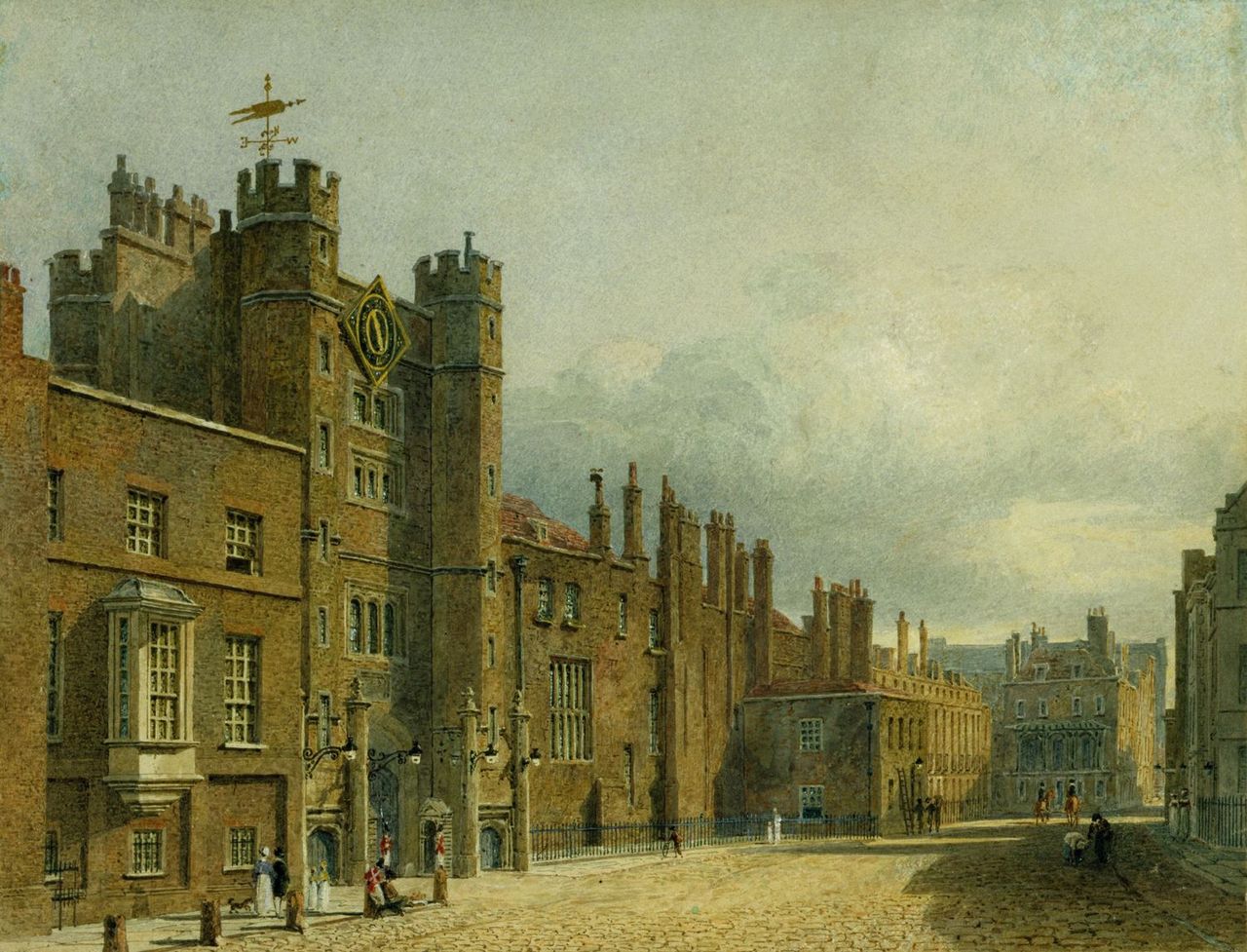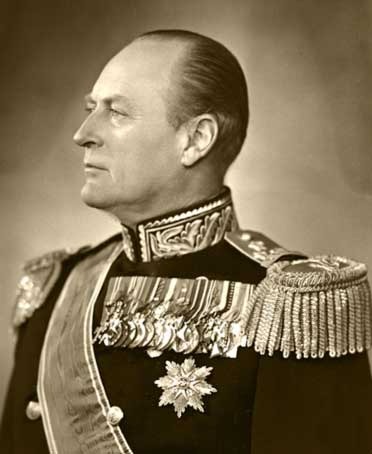© Unofficial Royalty 2024

Sophie of Sweden, Grand Duchess of Baden; Credit: Wikipedia
July 6, 1189 – Death of King Henry II of England at Chateau Chinon, in Chinon, County of Anjou, now in France; buried at Fontevrault Abbey near Chinon
By the time Henry II turned age 56 in 1189, he was prematurely aged. Two sons were left: Richard, the second son, the favorite of Henry II’s wife Eleanor of Aquitaine, and the heir since his elder brother’s death, and John, the youngest child and Henry’s favorite. King Philippe II of France successfully played upon Richard’s fears that Henry would make John King, and a final rebellion broke out in 1189. Decisively defeated by Philip and Richard and suffering from a bleeding ulcer, Henry retreated to his favorite residence, the Château de Chinon in Anjou. There he was told that John had publicly sided with Richard in the rebellion, and this broke his heart. Only his illegitimate son Geoffrey, Archbishop of York was at his father’s deathbed and it moved Henry to observe that his illegitimate son had proved more loyal than his legitimate sons. King Henry II of England died at the Château de Chinon on July 6, 1189, at the age of 56, and was succeeded by his son Richard. The late historical fiction author Sharon Kay Penman‘s excellently researched and highly recommended Plantagenet Series deals with Henry II and his family.
Unofficial Royalty: King Henry II of England
July 6, 1553 – Death of King Edward VI of England at Greenwich Palace in London, England, buried at Westminster Abbey in London, England
In January 1553, fifteen-year-old King Edward VI became ill with a fever and cough that gradually worsened. It is liekly that he had tuberculosis. By May 1553, the royal doctors had no hope that the king would recover. After great suffering, fifteen-year-old King Edward VI died on July 6, 1553, at Greenwich Palace. He had a Protestant funeral conducted by Thomas Cranmer, Archbishop of Canterbury, and was buried in the Henry VII Chapel at Westminster Abbey on August 8, 1553.
Unofficial Royalty: King Edward VI of England
July 6, 1598 – Birth of Kirsten Munk, morganatic second wife of King Christian IV of Denmark, in Nørlund, Denmark
After the death of his wife Anna Katharina of Brandenburg, 39-year-old Christian IV became attracted to 18-year-old Kirsten. Kirsten’s astute mother did not want her daughter to become Christian’s mistress and instead negotiated a morganatic marriage between Christian and her daughter due to Kirsten’s status as a noble. Kirsten received properties in her name and was assured of a widow’s pension. Christian and Kirsten were married on December 31, 1615, and Kirsten was not the Queen due to the morganatic marriage and was given the title Countess of Schleswig-Holstein. Despite Christian IV having affairs, he had a close relationship with Kristen who was described as intelligent and independent, and accompanied the king on his travels.
Unofficial Royalty: Kirsten Munk, Countess of Schleswig-Holstein
July 6, 1724 – Birth of Johann Nepomuk Karl, Prince of Liechtenstein in Wischau, Bohemia, now in the Czech Republic
Full name: Johann Nepomuk Karl Borromäus Josef Franz de Paula
In 1732, eight-year-old Johann Nepomuk Karl became the reigning Prince of Liechtenstein upon the death of his 42-year-old father. The former reigning Prince of Liechtenstein Josef Wenzel I served as regent and guardian for Johann Nepomuk Karl until he reached his majority in 1745. He carefully prepared Johann Nepomuk Karl to take over the business of government. However, when Johann Nepomuk Karl reached the age of 21 and took over the government, it appeared he had not learned anything. He was soon neglecting his government duties. In 1748, Johann Nepomuk Karl, Prince of Liechtenstein died at the age of 24. Because Johann Nepomuk Karl had no male heir, the former reigning Prince of Liechtenstein Josef Wenzel I once again became the reigning Prince.
Unofficial Royalty: Johann Nepomuk Karl, Prince of Liechtenstein
July 6, 1789 – Birth of Maria Isabella of Spain, Queen of the Two Sicilies at the Royal Palace of Madrid in Spain, second wife of Francesco I, King of the Two Sicilies
The daughter of Carlos IV, King of Spain, 13-year-old Maria Isabella married her 25-year-old cousin Francesco I, King of the Two Sicilies. Maria Isabella had a four-year-old stepdaughter from her husband’s first marriage. As a 15-year-old, Maria Isabella gave birth to her first child, followed by eleven more children over the next twenty-three years. Unusual for the time, all twelve survived childhood. Maria Isabella was only 41 years old when her husband died in 1830 and despite being overweight, she was still attractive and had relationships with younger handsome servants. Maria Isabella wanted to marry again and her son Ferdinando II provided her with a list of acceptable young nobles as potential husbands. In 1839, 50-year-old Maria Isabella married 34-year-old Count Francesco del Balzo but he was not allowed to be at court with Maria Isabella. The couple withdrew from court and moved to the Royal Palace of Capodimonte in Naples, Kingdom of the Two Sicilies, now in Italy.
Unofficial Royalty: Maria Isabella of Spain, Queen of the Two Sicilies
July 6, 1796 – Birth of Nicholas I, Emperor of All Russia at Gatchina Palace near St. Petersburg, Russia
Nicholas I, Emperor of All Russia was the third of the four sons and the ninth of the ten children of Paul I, Emperor of All Russia. Because he had two, much older brothers, he was not expected to become Emperor. Nicholas’ eldest brother Alexander I, Emperor of All Russia had no surviving children and the second brother Grand Duke Constantine Pavlovich was the heir to the throne. Grand Duke Constantine morganatically married Joanna Grudzińska. However, for Alexander I to approve the marriage, Constantine was required to forfeit his rights to the Russian throne in favor of his younger brother Nicholas.
Unofficial Royalty: Nicholas I, Emperor of All Russia
July 6, 1829 – Birth of Friedrich VIII, Duke of Schleswig-Holstein at Augustenborg Palace in Augustenborg, Denmark
Full name: Frederik Christian August
In 1864, following the Second Schleswig War, the Duchy of Holstein and the Duchy of Schleswig became occupied territories of the German Confederation, and two years later, following the Austro-Prussian War, part of the new Prussian Province of Schleswig-Holstein. However, Prussia recognized Friedrich as the mediatized duke of these two duchies, with the rank and all the titles.
Unofficial Royalty: Friedrich VIII, Duke of Schleswig-Holstein
July 6, 1832 – Birth of Maximilian I, Emperor of Mexico, born Archduke Maximilian of Austria, at Schönbrunn Palace in Vienna, Austria
Full name: Ferdinand Maximilian Joseph Maria
Maximilian was born an Austrian Archduke and was the brother of Emperor Franz Joseph of Austria. In 1861, Maximilian accepted the offer of becoming Emperor of Mexico. However, the liberal forces led by Benito Juárez, the former president deposed by the French, refused to recognize his rule. There was continuous warfare between the French troops and the forces of Juárez who wanted a republic. Maximilian was condemned to death by a court of war and was executed by a firing squad.
Unofficial Royalty: Maximilian I, Emperor of Mexico
July 6, 1865 – Death of Sofia of Sweden, Grand Duchess of Baden, daughter of King Gustav IV Adolf of Sweden and wife of Leopold, Grand Duke of Baden, at Karlsruhe Palace Grand Duchy of Baden, now in Baden-Württemberg, Germany; first buried in the Karlsruhe Stadtkirche, after World War II, her remains were moved to the Grand Ducal Chapel in the Pheasant Garden in Karlsruhe
As the wife of the Grand Duke of Baden, Sofia was very conscious of her duty. She worked diligently, supporting her husband Leopold, and becoming involved in charitable organizations that helped those in need. Sofia maintained a strong interest in science and art, but it was politics that seemed to be her biggest interest. A prolific writer, she maintained extensive correspondence with relatives and friends throughout Europe and never hesitated to share her thoughts and opinions when it came to any sort of political situation whether in her own country or elsewhere.
Unofficial Royalty: Sofia of Sweden, Grand Duchess of Baden
July 6, 1868 – Birth of Princess Victoria of the United Kingdom, daughter of King Edward VII of the United Kingdom, at Marlborough House in London, England
Full name: Victoria Alexandra Olga Mary
Victoria’s mother Alexandra was extremely possessive, demanded complete devotion from her children, and insisted that they call her Motherdear. Victoria’s sisters Louise and Maud escaped into marriage, leaving her at home as her mother’s constant companion. She had several suitors including Prince Adolphus of Teck, Sir Arthur Davidson, one of her father’s equerries, and Archibald Primrose, 5th Earl of Rosebery. Lord Rosebery was a former Prime Minister who had been widowed, and both he and Victoria would have liked to have married. However, Victoria’s mother actively discouraged her from marrying anyone. Instead, she remained a companion to her mother Queen Alexandra, and lived with her mother until 1925, when Queen Alexandra died. Grand Duchess Olga Alexandrovna, Toria’s first cousin, described her as little more than “a glorified maid.”
Unofficial Royalty: Princess Victoria of the United Kingdom
July 6, 1893 – Wedding of Prince George, Duke of York (later King George V of the United Kingdom) and Princess Mary of Teck, at the Chapel Royal, St. James Palace in London, England
After the death of Mary’s first fiancé Prince Albert Victor, the eldest son of the future King Edward VII and the brother of Prince George, Duke of York (later King George V), Mary and George spent much time together. As time passed and their common grief eased, there was hope that a marriage might take place between them. George proposed to Mary beside a pond in the garden of his sister Louise’s home, East Sheen Lodge, on April 29, 1893. The engagement was announced on May 3, 1893, with the blessing of Queen Victoria.
Unofficial Royalty: Wedding of King George V of the United Kingdom and Princess Mary of Teck
This article is the intellectual property of Unofficial Royalty and is NOT TO BE COPIED, EDITED, OR POSTED IN ANY FORM ON ANOTHER WEBSITE under any circumstances. It is permissible to use a link that directs to Unofficial Royalty.





